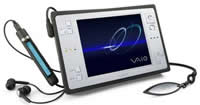SBC, the largest supplier of DSL connections in the USA, has announced a deal to spend $400m (~€307m, ~£215m) with Microsoft over the next ten years to purchase their Internet Protocol TV (IPTV) software. SBC has been testing Microsoft’s IPTV platform since June 2004 and they now intend to start field trials in mid-2005 and plan commercial availability in late 2005.
The Microsoft product, whose official name is a bit of a mouthful – Microsoft TV IPTV Edition, provides comprehensive security including subscriber and end-to-end digital rights management (DRM), enabling the content to be taken on to the portable devices that support Microsoft’s DRM.
In the first quarter of 2005, construction is due to begin on the SBC “Project Lightspeed”, the company’s initiative to deploy fibre closer to customer locations, providing significant amounts of bandwidth. It is expected to reach 18 million households by the end of 2007.
Microsoft have, of course, had enough opportunity to get TVIP software right. It has been estimated that Microsoft has spent up to $20Bn pursuing their ambitions of being the supplier of choice for TV software for the next-generation of Set Top Boxes (STB’s). We briefly used Microsoft’s TVIP service at IBC this year and found it pretty impressive.
This is the second major TV announcement for Microsoft this month following the Comcast deal.
As the world moves to IP-delivered content, and the source of that content becomes significantly less important, the power that sits with the broadcaster today becomes transferred to the owner/supplier of the box that is used to access the content – the gatekeeper. It is likely that there will normally only be one gatekeeper per household. The race is now on for companies to establish themselves in that role.
 The latest addition to Sony’s VAIO range of personal computers is really, really different. The VAIO VGN-U750P (around US$2,000) is a palmtop computer that also goes under the more firendly name of the Vaio U and weighs considerably less than the average laptop (167x108x26mm, 550g), yet boasts a fully fledged Intel-based environment running Windows XP Professional SP2 as opposed to the specialised platforms powering other handhelds, such as Palm OS, Windows Mobile or even Windows XP Tablet PC Edition.
The latest addition to Sony’s VAIO range of personal computers is really, really different. The VAIO VGN-U750P (around US$2,000) is a palmtop computer that also goes under the more firendly name of the Vaio U and weighs considerably less than the average laptop (167x108x26mm, 550g), yet boasts a fully fledged Intel-based environment running Windows XP Professional SP2 as opposed to the specialised platforms powering other handhelds, such as Palm OS, Windows Mobile or even Windows XP Tablet PC Edition. Designed for law enforcement, perimeter security and long-range video links,
Designed for law enforcement, perimeter security and long-range video links,  Linksys’ consumer and small-business oriented
Linksys’ consumer and small-business oriented